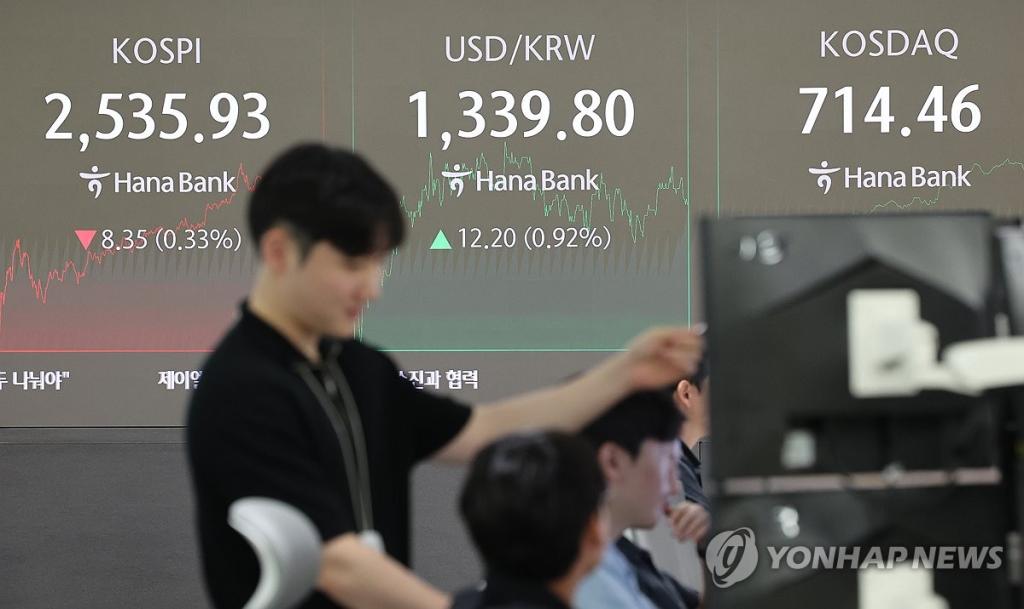Asian Market Turmoil Driven by U.S. Economic Concerns
Explore how U.S. economic concerns are fueling turmoil in Asian markets, impacting indices, currencies, and global investment strategies.

Key Points
- Asian markets are experiencing significant declines due to weak U.S. employment data sparking recession fears.
- The strength of the yen is negatively affecting Japan's export-driven economy, impacting major companies like Toyota
and Honda.
- Investor interest is shifting towards strategic diversification in response to global economic uncertainties and the potential for central bank rate cuts.
The financial landscape in Asia has recently experienced significant turbulence, largely driven by apprehensions regarding the U.S. economy. With various Asian stock markets plummeting, investors find themselves grappling with uncertainty. This period of market turmoil reflects broader economic fears that may reshape investment strategies across the region.
Just last week, the
index in Japan reported a steep decline of over 3% at the market's open due to weak U.S. employment data. The concerns surrounding the American job market, where only 142,000 jobs were created in August compared to forecasts of 175,000, raised alarms about a potential recession. Such underwhelming figures have sparked fears of a cooling economy, causing ripple effects throughout the global market. The Japanese market has responded negatively, with many exporters feeling the brunt of these developments.

Further complicating the situation is the strong performance of the yen, which has put pressure on exporters such as Toyota and Honda, leading to their shares dropping significantly. Analysts like Yuta Okamoto from Tokai Tokyo Intelligence Lab suggest that the yen's strength will heavily affect Japan's export-oriented economy, underlining the vital connection between currency fluctuations and market performance.
Impact on Asian Markets
Other Asian markets have also shown vulnerability. The Kospi index in South Korea saw decreases as well, initially dipping below key support levels before attempting a minor recovery. Similarly, the
index in Hong Kong fell 1.8%, reflecting the widespread nature of this downturn. The interconnectedness of Asian markets with U.S. economic indicators emphasizes the importance of global economic health for regional stability.
Another factor contributing to this market malaise is the tech sector's performance. Major chipmaker
's disappointing revenue forecast has compounded issues already affecting technology stocks, which have been under pressure this year. With Wall Street’s main indices tumbling, investors here are worried about the sustainability of tech rallies amid fluctuating economic indicators.
Understanding the Economic Indicators
The undercurrents driving these market movements stem from more than just employment figures. Recent reports indicate a noteworthy concern about U.S. inflation rates, which may prompt the
to adjust interest rates. As investors await insights from upcoming consumer price index (CPI) reports, there’s an increasing anticipation that a reassessment of rate policies may come soon.
economist Christian Keller highlights that the current data shows no immediate need for drastic measures, advocating for a measured approach—likely a 25 basis point cut—rather than a more aggressive 50 basis point decrease.
To add to the complexity of the current situation, the
is also under scrutiny, with expectations that the
will also consider rate cuts. This global concert of potential easing could provide a temporary reprieve, but the uncertainty surrounding economic growth and consumer confidence looms large.
Moving Forward in an Uncertain Environment
Given the uncertainty surrounding several critical economic indicators, investors must be strategic. Observing trends in consumer inflation and the general sentiment of central banks globally will be key in determining how to navigate these turbulent waters. Investors might consider diversifying portfolios to mitigate potential risks in affected sectors, especially in technology and exports.
As Asia grapples with these mounting challenges, it's essential to stay informed and agile in investment decision-making. The path forward will undoubtedly require careful analysis and a proactive approach to adapting to emerging economic realities.
In summary, the current state of Asian financial markets reflects broader economic concerns originating from the U.S. job market and subsequent impacts on global trade dynamics. Understanding the interconnectedness of markets and staying aware of economic indicators is crucial for navigating these turbulent times.


